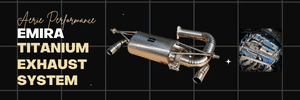Rubber lines vs Braided steel lines: The difference should be the immediacy of the response in the brake pedal feel. You should be able to tell this difference hot and cold but it has an overall near negligible effect on actual braking performance.
Standard brake fluid vs High performance brake fluid: The difference you'd feel here would be spongy brakes after a few hot sessions or the pedal going straight to the floor if it's very old fluid with lots of water absorbed.
Standard pads vs Track pads: When the pad gets hot enough, the pad actually goes through sublimation. That's when a material goes directly from solid to gas state. Your pads are literally turning into a heated gas. This feels like you're pressing the pedal and you're getting resistance but you're not getting as much or any braking force. This is also called pad fade and it's the first thing you'll notice when you take a street pad out on the track. Many brake system deficiencies due to this sort of failure are attributed to other causes. The reason rotors are actually slotted and/or drilled is so that as pads sublimate, the gas has somewhere to escape otherwise it gets trapped under the pad and the rotor and pushes back keeping the pad and rotor apart. Track oriented pads have a higher metallic content and less organic pad content which can hold up to higher temperatures before sublimating.
You usually have solid info, so when you say the different lines have a near negligible effect on actual braking performance, what are you referring to as "actual braking performance"? I can tell you from years of doing the swap that the braided lines DO make a noticeable difference, especially on the track where the pedal pressure stays consistent even when the brakes heat up. At that point the braking performance is then up to the pads and strength of the disk/caliper combo as to how well they grip.
If by "standard" brake fluid you're referring to DOT3 that a non-track car would normally come with, the difference between DOT3 and DOT4 fluid is the boiling point. DOT4 has a higher boiling point. High performance cars come with DOT4 so the brake fluid doesn't boil in the lines when the brakes heat up, whereas DOT3 can which means you suddenly lose your brakes. If you've never experienced vapor lock, it ain't fun. DOT4 fluid will absorb moisture easier and faster than DOT3, so you do need to change the fluid more often as a result, but if you're going to the track, you should be changing the brake fluid out every 2 or 3 track days (depending on how much driving time you get) anyways. You should also change the diff oil too. On the Camaro GM recommended changing the diff oil for every 6 hours of track use. I would change out all the fluids; engine, trans and diff after every 3 track days. That would be for a total of usually 4-5 hours of actual track time.
Street vs track pads: Yep, track pads will hold up better on the track, but at a cost. They'll eat through rotors faster than street pads will. The aggressive pads need more heat to work well which is why they do so much better on the track, however for street use they won't be as effective as a street pad, especially if you live in an area with cold temperatures. A street/track pad is a compromise for both to some degree. They will work better for street than just a track pad, better than a street pad for track, but not as good on the track as a track pad. Depends on how often you go to the track and how hard you drive, as to whether or not it makes economic sense to go with a dedicated track set of pads and rotors, or just a set of street/track pads. For the occasional track day, a good street/track pad is a decent upgrade that you can use all the time.
Track use costs money, period. For anyone not used to track days, expect to pay to play. They're a lot of fun, but things like brake rotors, pads and tires are considered consumables along with frequent fluid changes. The cost can climb up into the thousands quickly. Lighter weight cars do better in this area than heavier cars though, so the Emira will do better in that regard than a muscle car for example.







